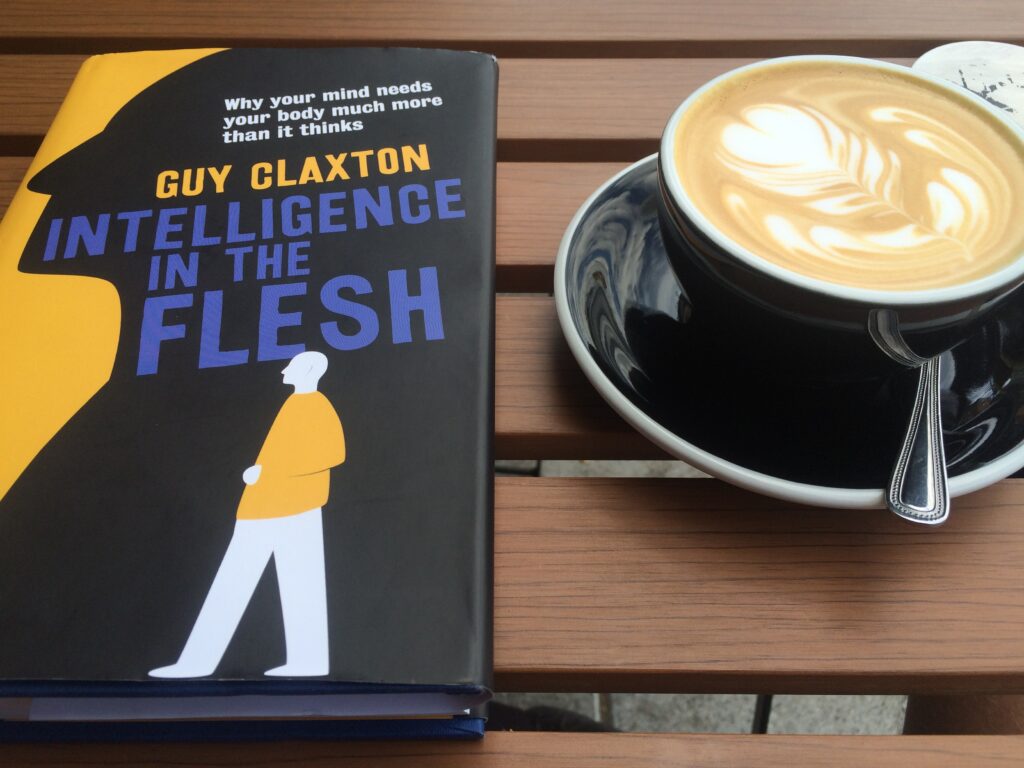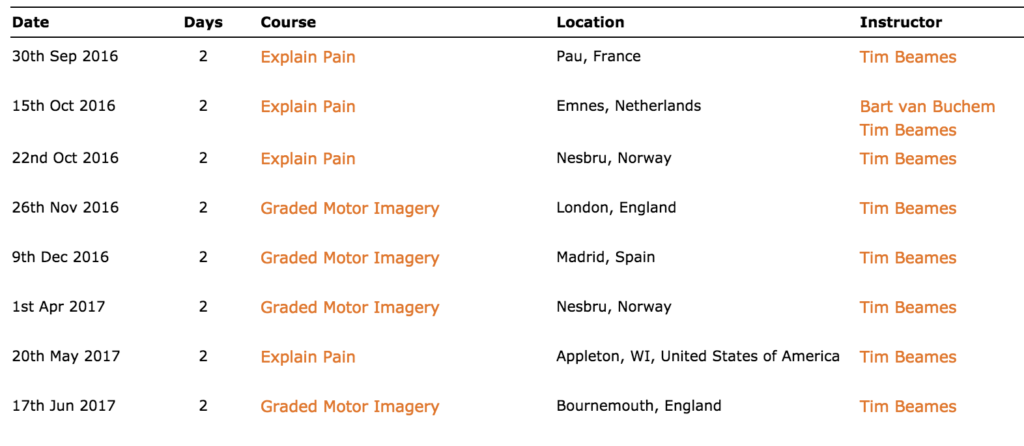
Name: Tim Beames
Profession: Physiotherapist
Book title: Intelligence in the flesh: Why your mind needs your body much more than it thinks
Author: Guy Claxton
What are you drinking with it? Another flat white!!
Thoughts on the book:
There was interesting ebb and flow through this book with several well written chapters. On the whole the arguments were well constructed to back up an embodied cognition approach of intelligence:
“We do not have bodies; we are bodies. If my body was different, I would be different”
There were a number of consistent themes running through the book alongside the overarching model of embodied cognition. Claxton introduced metaphors as a way of communicating the dynamic brain-body-world interaction. I feel that clinicians working in rehabilitation and pain would benefit from these insights and their effect on the person in pain.
“We use the word burdensome to refer to something that is weighing heavily on our mind…So it should not surprise us to learn that people carrying what they feel to be burdensome secrets…. rate carrying a bag of shopping upstairs as requiring more effort”
Claxton articulately dismantled the Cartesian model of intelligence:
“The actual business of thinking is embedded in the process of unfurling; it is a function of the whole dynamic body-brain system, not of any mysterious Fat Controller of the mind.”
His area of expertise lies in learning, a topic that is also embedded in his narrative.
“..it is a Cartesian mistake to think that, once you have mastered logic, you don’t need the body any more. Yes, new ways of thinking and knowing do emerge. But they emerge from immediate, embodied ways, and are continuous with them. We should think of the developing mind as a tree that grows new branches, not as a spaceship whose booster rockets fall away for ever once they have done their job and are spent.”
To me this is a beautiful and evocative message that can be communicated to the person entrenched in the belief that they are unable to change!
“Good communication depends on this bodily coupling…our bodies are in a state of continual resonance with those around us – or those we may be remembering or imagining. While you and I think we are discussing the film we’ve just seen, our bodies are dancing with each other’s every gesture and expression.”
This shows what Claxton refers to as ‘social resonance’ and would undoubtedly help the empathetic clinician understand their patient better.
Ultimately, he is interested in putting forward the concept that intelligence is something that occurs
“…through the body, we are deeply connected with and constituted by the world around us. The tools and resources we use literally become incorporated into the body’s working definition of itself… [It] is what allows effective, economical, elegant and appropriate interaction with the world. It is intelligent to accumulate a wide repertoire of such routines”
He sets out five approaches that can benefit a rehabilitation process aiming to improve bodily awareness: interoceptive awareness; biofeedback; mindfulness meditation; focusing; and movement and exercise. On the whole these approaches fit well with an embodied cognition approach to rehabilitation. Sadly, there is little evidence used to validate them, especially in the section regarding exercise and movement. Despite this slightly disappointing (and abrupt) ending to the story, he creates a compelling reason for clinicians to expand their knowledge and become comfortable with models such as embodied cognition.
-Tim Beames
Tim lives in London where he works as a physiotherapist for Pain and Performance. He is also the principal instructor for NOI UK. Having completed his Masters in Pain: Science & Society at King’s College London he has a special interest in complex and persistent pain states and particularly altered bodily perception in pain.
He is co-author of the Graded Motor Imagery Handbook (2012) alongside Lorimer Moseley, David Butler and Tom Giles and also the chapter on management of cervical spine disorders in the 8th edition of Maitland’s Vertebral Manipulation (2013). He has also published studies on Graded Motor Imagery and body perception in peer-reviewed journals.
He teaches NOI courses throughout the UK, Europe and America. These include Explain Pain, Mobilisation of the Nervous System and Graded Motor Imagery. Tim has a busy teaching schedule over the coming months and, his reputation preceding him, his courses always sell out fast. Check out our courses page on noigroup.com to enquire about any of Tim’s upcoming courses or contact Joanna Taylor at NOI UK via email – joanna@noigroup.com


Lovely post Tim and it’s sad to think that we are losing the ability to “dance with each other’s every gesture and expression” as we increasingly have a very private and lonely relationship with our mobile phones…..
Sounds like a good idea for the next post!! It’s certainly a reflection of what I see on the Tube.